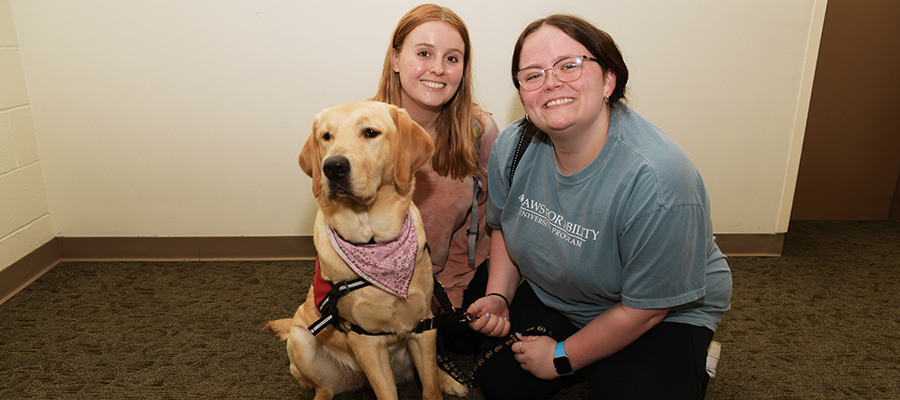Dogs who serve
When Nine, a labrador retriever who wasn’t quite a year old, visited the UD Magazine office, several of my colleagues were quite excited. They like dogs. A lot.
Nine brought two humans with her: Abby Bruns ’22, who was president of UD’s 4 Paws Club this past year, and Samantha Lowe ’23, who will be president next year. 4 Paws for Ability is a Dayton-area organization that places service dogs, focusing largely on placements with children who have autism or seizures and with veterans with disabilities.
“Handlers,” Bruns explained of the students’ roles, “feed the dogs, give them a place to sleep, take them to classes.” There are also sitters who act like babysitters for the dogs. 4 Paws pays for food and medical care.
But not for treats. “Nine is very food motivated,” Bruns noted.

The UD club has about 100 members, including eight handlers and 40 sitters. “Freshman year,” Lowe said, “I was a general member and went to meetings (and got to see the dogs). Sophomore year I was a daytime sitter.”
The UD club’s goal for the dogs, Bruns said, “is to get them used to public spaces and to learn some commands.” Asked for examples, she came up with a list of 20, “sit” and “no” being at the top.
For a 4 Paws dog, going to class and not being noticed is a great compliment. “Some do have a teenage phase,” Lowe said. “They rebel against everything.”
“They rebel against everything.”
Not on the list of commands is pressing an elevator button when told to do so. Nine can do that, though Bruns said she is careful the dog doesn’t hit the alarm button. Although a dog can get elevator operator experience at UD, Bruns said exposure to children is lacking. In response, a colleague of mine exclaimed, “I have a 4-year-old!”
4 Paws has strict rules about placements. “Once placed, about 99% work out,” Bruns said.
After UD, the dogs go on to advanced training. When Bruns’ previous dog, Marina, left for that training, Bruns said she cried for two weeks.